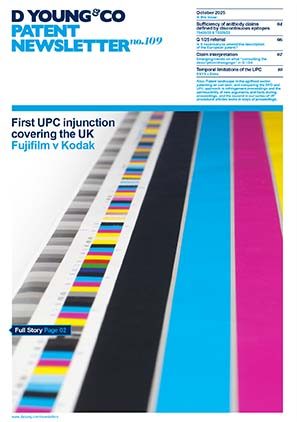AI in agritech: protecting innovation in a growing sector
Artificial intelligence is reshaping the agricultural landscape. From early disease detection to waste reduction, AI is enabling more sustainable and efficient food production at every stage of the supply chain. As these technologies become more sophisticated, strong patent protection will be crucial in helping innovators secure their position in this rapidly evolving sector.
How AI is transforming agricultural practice
AI’s influence on agriculture extends well beyond data analysis. It is increasingly embedded in the machinery, monitoring systems, and decision-making tools that power modern farming. Across livestock management, crop cultivation, and post-harvest processing, AI is driving measurable improvements in efficiency and output.
Farmers are now using AI-based monitoring systems to track livestock behaviour and detect anomalies, such as reduced movement or feeding, that may signal illness or other issues. Cameras integrated into harvesting machinery are being trained to assess crop quality in real time, allowing automatic adjustments that reduce waste and maximise yield. In the fields and orchards, AI image recognition identifies early signs of fungal or bacterial infection in crops, often days before manual inspection could do so. At the post-harvest stage, AI vision systems spot damaged produce, such as broken rice grains, ensuring that only quality stock enters the supply chain.
These innovations share a common goal: improving productivity while minimising waste. They rely on complex interactions between sensors, data streams, and machine-learning algorithms; making them not just agricultural advances, but also highly technical inventions that merit careful patent consideration.
Patenting AI-driven agritech: identifying the technical contribution
In Europe, AI-based agritech inventions are assessed under the European Patent Office (EPO) framework for computer-implemented inventions. This means the invention must provide a technical contribution beyond the mere execution of a computer program or mathematical method. In practice, that contribution often arises from the way the AI model is applied to a real-world technical problem. However, simply using an AI model within the agricultural field is not, on its own, sufficient to confer patentability.
Even where an invention is implemented in a technical environment, it is crucial to consider the output of the AI system when assessing whether a patentable technical effect is achieved. For example, an AI system that analyses image or video data to control harvesting machinery or processing equipment can deliver tangible technical advantages, such as improved product quality or greater yield. Inventions of this kind are typically recognised as providing a technical contribution and are therefore patentable.
The position becomes more complex when the invention’s output is information presented to a human operator rather than direct control of equipment. In these cases, patent protection may still be possible if the AI model processes real-world technical data (for instance, sensor measurements or captured images) and produces a specific technical output that informs or improves a technical process. Conversely, a broadly defined AI model that is not clearly linked to a particular technical function or effect will be more difficult to protect, as it becomes harder to demonstrate a consistent technical contribution across the full scope of the claim.
Balancing disclosure and commercial protection
Patent protection requires public disclosure of the invention, which can present challenges for AI-based technologies. The application must provide enough information for a skilled person to reproduce the invention, but machine-learning models often depend heavily on training data and model architecture, both of which may be commercially sensitive. However, applicants must still provide sufficient detail about how the AI system operates to meet the patent’s enablement requirement.
A well-drafted patent specification can strike the right balance. It should highlight the inventive concept (for example, how sensor inputs are processed or how the AI system interacts with machinery) while avoiding unnecessary disclosure of proprietary data. Complementary protection, such as trade-secret management, can safeguard the confidential aspects of an AI system while ensuring the patent itself remains robust and enforceable.
Conclusion
AI has the potential to make agriculture more efficient, resilient, and sustainable. Whether monitoring livestock, detecting crop disease, or reducing post-harvest waste, these technologies address some of the most pressing challenges in global food production. By combining technical innovation with a thoughtful intellectual property strategy, agritech developers can ensure both their ideas and their competitive edge are firmly protected.

